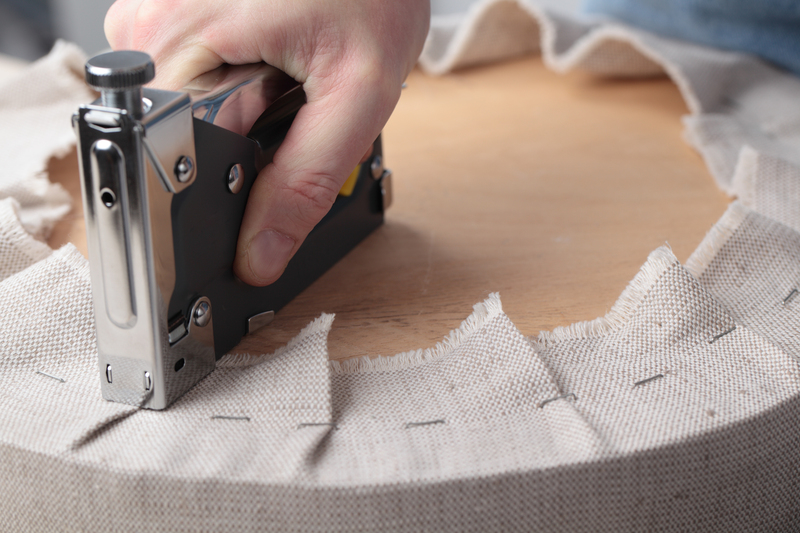Top Strategies for Reducing Waste in Manufacturing
Reducing waste in manufacturing is not only beneficial for the environment but also enhances efficiency and lowers operational costs. In today's competitive market, companies cannot afford to overlook the significance of waste reduction. This comprehensive guide explores effective strategies and provides insights on minimizing waste throughout the manufacturing process.

Understanding Waste in Manufacturing
Waste in manufacturing is any activity or process that does not add value to the end product from the customer's perspective. Common types of waste include:
- Overproduction: Producing more than demanded.
- Waiting: Idle time caused by delays.
- Transportation: Unnecessary movement of materials and products.
- Inventory: Excessive raw materials, work-in-progress, or finished goods.
- Motion: Unnecessary movements by workers.
- Defects: Products that require rework or are unsellable.
- Over-processing: More work or features added than required.
Importance of Waste Reduction
Reducing waste is crucial for several reasons:
- Cost savings: Less waste means lower raw material and disposal costs.
- Environmental impact: Waste reduction leads to less pollution and resource depletion.
- Efficiency improvements: Streamlined processes result in faster production times and increased capacity.
- Reputation enhancement: Being eco-friendly can improve brand image and customer loyalty.
Effective Strategies to Reduce Waste
1. Implement Lean Manufacturing
Lean manufacturing is a systematic method for waste minimization within a manufacturing system. It emphasizes continuous improvement and efficiency. Key principles include:
- Value Stream Mapping: Identify and eliminate wasteful processes by mapping out all actions required to complete a product.
- 5S System: Sort, Set in Order, Shine, Standardize, and Sustain to maintain an organized workplace that reduces waste and boosts productivity.
- Kanban: A scheduling system that controls the logistical chain from a production point of view, reducing overproduction and inventory.
2. Adopt Just-In-Time Manufacturing
Just-In-Time (JIT) manufacturing aligns raw-material orders with production schedules to minimize inventory and reduce waste. Benefits include:
- Decreased inventory costs: Raw materials are delivered as needed.
- Reduced storage needs: Less warehousing space needed for inventory.
- Increased cash flow: Resources are not tied up in unsold stock.
3. Utilize Technology
The adoption of technology can significantly reduce waste in manufacturing. Key technologies include:
- Automation: Automated systems and machinery reduce human error and scrap rates.
- Predictive Maintenance: Using data and sensor technology to predict and prevent equipment failures before they result in downtime.
- IIoT (Industrial Internet of Things): Connectivity of devices for real-time monitoring and analytics, thereby optimizing production and reducing waste.
4. Invest in Employee Training
Employees play a crucial role in waste reduction. Providing proper training ensures that they:
- Understand waste reduction techniques: Equip staff with knowledge on procedures and best practices.
- Identify waste: Empower workers to spot inefficiencies and suggest improvements.
- Encourage a culture of continuous improvement: Foster an environment where employees contribute ideas for efficiency.
5. Embrace Sustainable Practices
Sustainable practices contribute significantly to waste reduction. Strategies include:
- Recycling and Reusing: Implementing systems to recycle materials and reuse scrap efficiently.
- Eco-friendly materials: Use biodegradable or recyclable materials wherever possible.
- Energy efficiency: Invest in energy-saving technologies and alternative energy sources.

Challenges in Reducing Waste
While the benefits of waste reduction in manufacturing are significant, several challenges can hinder progress:
- Initial Costs: Implementing new technologies and training can require considerable upfront investment.
- Cultural Resistance: Employees and management might resist changes to established processes and workflows.
- Complex Supply Chains: Coordinating with suppliers and partners can be challenging when implementing new waste reduction strategies.
Overcoming Challenges
To effectively tackle these challenges, manufacturers can:
- Develop a clear strategy: Outline the goals and steps for waste reduction and communicate them effectively.
- Start small: Implement pilot programs to test and refine new techniques before wide-scale adoption.
- Engage stakeholders: Involve employees, suppliers, and customers in the waste reduction initiatives.
Conclusion
Waste reduction in manufacturing is a multifaceted challenge that requires commitment and strategic planning. By adopting lean methodologies, leveraging technology, and fostering a culture of continuous improvement and sustainability, manufacturers can reduce waste effectively. Not only does this lead to operational excellence, but it also enhances environmental responsibility, positioning businesses for long-term success in an increasingly eco-conscious market.
Embrace these strategies, and your company will reap the benefits of streamlined operations and reduced waste, ensuring a sustainable future for generations to come.